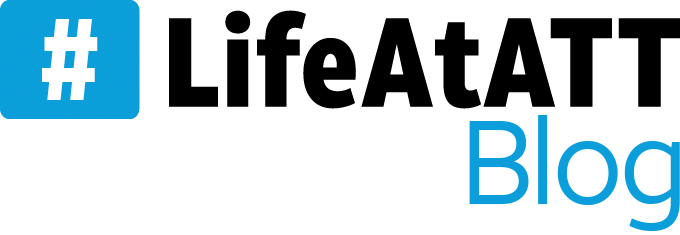 Your resume serves as your personal marketing tool — it’s your chance to make a memorable first impression. A well-crafted resume can open doors to new opportunities, while small mistakes can keep them closed. Whether you’re just starting out or bringing years of experience to the table, steering clear of these pitfalls is key to landing interviews and moving closer to your dream role.
Your resume serves as your personal marketing tool — it’s your chance to make a memorable first impression. A well-crafted resume can open doors to new opportunities, while small mistakes can keep them closed. Whether you’re just starting out or bringing years of experience to the table, steering clear of these pitfalls is key to landing interviews and moving closer to your dream role.
Let’s walk through five of the most common resume mistakes and provide clear, actionable strategies to fix them.
Mistake #1: Including irrelevant or outdated information
Why it’s a mistake:
Your resume should be a concise snapshot of your most relevant qualifications. Many candidates clutter their resumes with outdated jobs from decades ago, irrelevant hobbies, or unnecessary personal details. This not only makes your resume longer than necessary but also weakens the impact of your key achievements.
How to fix it:
- Focus on the last 10-15 years: Typically, employers are most interested in your latest work experience. Even if you have decades of experience, focus on the most recent and relevant roles.
- Remove irrelevant jobs: Consider removing or minimizing any roles in a field unrelated to your current career goals.
- Skip personal details: Avoid including information such as age, marital status, or hobbies unless they directly relate to the job.
- Streamline your education section: Only include degrees or certifications relevant to the position.
Example fix: A software developer applying for a tech role doesn’t need to list a part-time retail job from 15 years ago unless it demonstrates transferable skills like customer service or leadership.
Mistake #2: Poor formatting and layout
Why it’s a mistake:
Even if your qualifications are strong, a poorly formatted resume can be a major turnoff. Busy hiring managers tend to spend seconds to a few minutes looking at a resume and if it’s cluttered, inconsistent, or hard to read it could be quickly rejected. Common formatting issues include inconsistent fonts, excessive use of colors, long paragraphs, and lack of white space. Don’t get fancy—simple and clean templates are best when you’re up against an ATS.
How to fix it:
- Use a clean, professional layout: Choose a simple font like Arial, Calibri, or Times New Roman in 10–12-point size. There are many great, ATS friendly resume templates online.
- Use bullet points: Present achievements and responsibilities in concise bullet points rather than long paragraphs. Example: Led a team of 5 in developing a new CRM system, improving client tracking efficiency by 30%.
- Consistent formatting: Ensure consistent use of bullet points, font styles, and spacing throughout the document.
- Prioritize white space: Make sure your resume isn’t cramped. Adequate margins and spacing improve readability.
- Limit Length: Always aim for one page; if you have more than 10 years of experience, no more than two.
Mistake #3: Failing to quantify achievements
Why it’s a mistake:
Vague statements such as “responsible for sales” or “worked on projects” don’t provide evidence of your impact. Hiring managers want to see measurable results that show how you contributed to your previous employers’ success. Without numbers, your resume lacks credibility and fails to stand out.
How to fix it:
- Use numbers and metrics: Whenever possible, include statistics, percentages, dollar amounts, or time frames.
- Showcase results: Focus on what you achieved rather than just your duties.
- Be specific: Instead of “improved customer satisfaction,” say “increased customer satisfaction scores by 15% over 6 months.”
Mistake #4: Typos and grammatical errors
Why it’s a mistake:
Typos and grammatical mistakes suggest a lack of attention to detail and professionalism. Because of this, many recruiters discard resumes with errors right away, as they reflect poorly on your communication skills and work ethic.
How to fix it:
- Proofread multiple times: Carefully review your resume several times before submitting.
- Read aloud: This can help catch awkward phrasing or mistakes.
- Use tools: Utilize spelling and grammar checkers like Grammarly or Microsoft Word’s built-in tools. You can also use AI to review for any editing suggestions.
- Ask someone to review: A fresh pair of eyes can spot errors you might have missed.
Mistake #5: Using a generic resume
Why it’s a mistake:
Many job seekers send out the same resume to every employer, without customizing it for the specific role or company. This approach overlooks an important step: tailoring your resume to match the job description and company culture. Recruiters typically scan resumes looking for keywords and skills related that align with the position. When your resume is too generic, it may not highlight your most relevant qualifications, making it easy to get overlooked.
How to fix it:
- Customize your resume for alignment: Start by carefully reading the job description. Identify the key skills, experiences, and qualifications the employer is seeking.
- Incorporate keywords: Use exact keywords and phrases from the job posting, that are related to your skills and experience Applicant Tracking Systems (ATS) rely on these keywords to identify and filter qualified candidates.
- Highlight relevant experience: Focus on the parts of your background that directly line up with the job requirements. For example, if the role emphasizes project management, make sure your related experience shines through.
- Don’t forget to update your objective statement: This summary should also reflect the role and company values, showing that you’re a perfect fit.
Example fix: If applying for a marketing role that requires digital marketing skills, ensure your resume explicitly showcases your experience in SEO, content marketing, and social media management rather than a broad marketing background.
Bonus tips for a winning resume
- Include a professional summary: A brief 2-3 sentence overview at the top that highlights your key skills and career goals.
- Use action verbs: Start bullet points with strong verbs like “led,” “developed,” “increased,” or “implemented.”
- Add relevant keywords: Especially for online applications, including industry-specific keywords.
- Keep it honest: Never exaggerate or falsify information; integrity matters.
- Update regularly: Even if you’re not job hunting, keep your resume current to save time later.
Your resume is one of your most powerful tools in your job search, but common mistakes can prevent you from landing the interviews you deserve. By avoiding generic applications, focusing on relevant information, maintaining clean formatting, quantifying your achievements, and eliminating errors, you can create a resume that stands out.
Remember, a great resume is more than just a list of past jobs; it’s a compelling story of your professional journey and the unique value you bring to potential employers. Invest the time to polish your resume, and you’ll increase your chances of making a memorable impression and securing your next great opportunity.
Make sure your resume is optimized for Applicant Tracking Systems to give you the best chance of landing an interview. If you’re ready to apply…
Find your place with AT&T




September 30, 2025
Thanks for the tips. It’s good to know that AT&T cares about the job seekers.